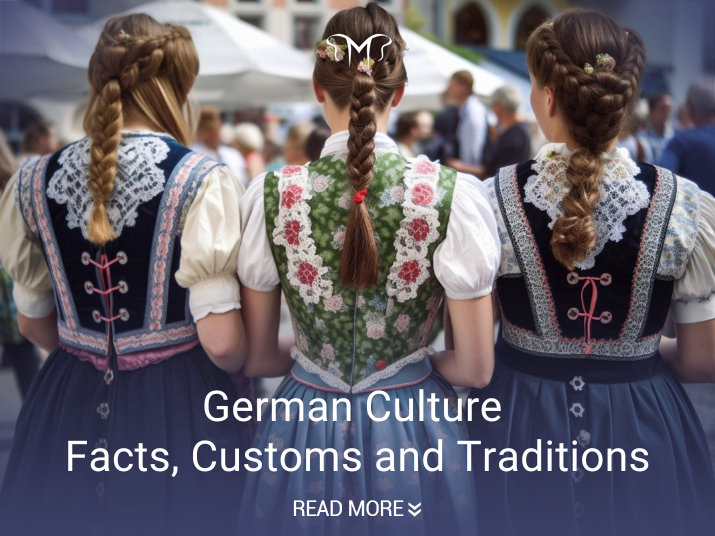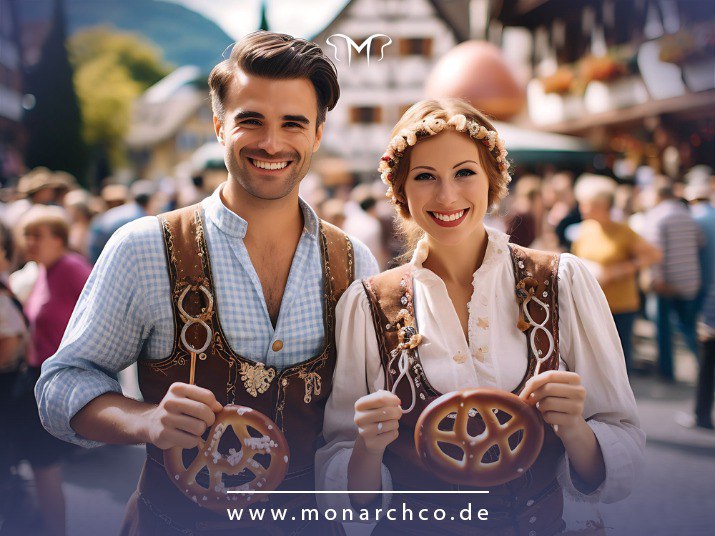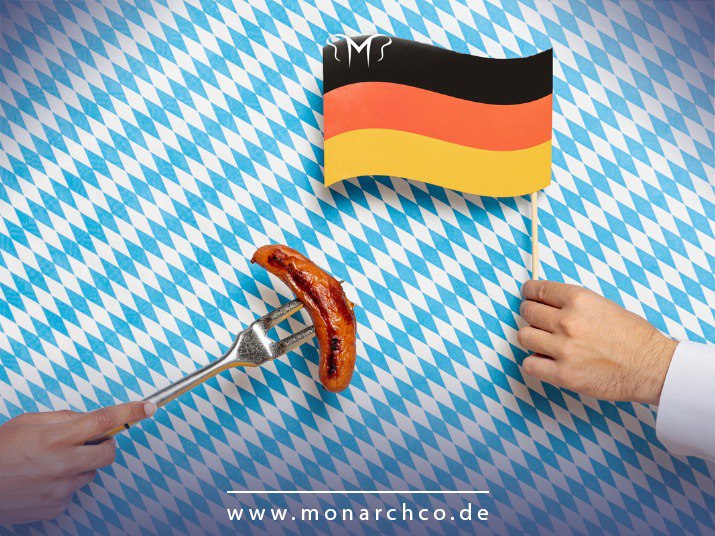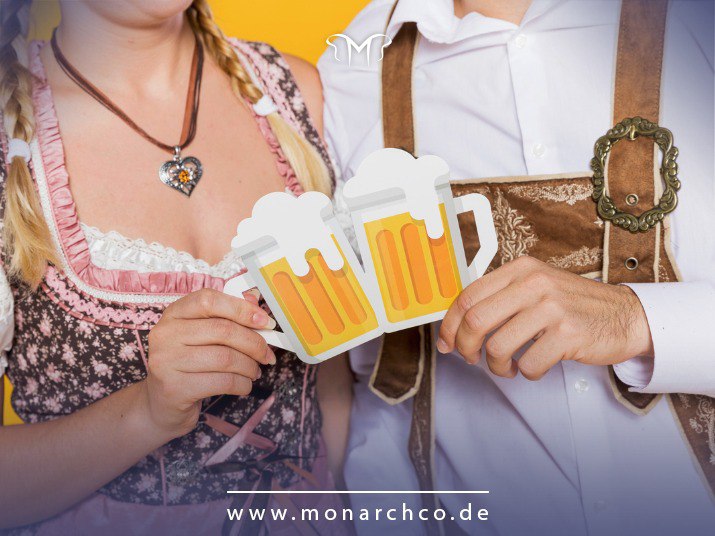
German Culture: Facts, Customs and Traditions
Germany, located at the heart of Europe, holds not only a central geographic position but also wields significant political and economic influence. With over 80 million people, it stands as Europe's second most populous nation.
Germany boasts the continent's largest economy and ranks as the world's fifth-largest. Its impact extends to neighboring countries like Austria, Belgium, Czech Republic, Denmark, France, Luxembourg, Netherlands, Switzerland, and Poland, each contributing to shaping modern Germany.
The population, primarily German at 91.5 percent, reflects its multicultural nature with Turkish as the second-largest ethnic group at 2.4 percent. Diverse heritage includes Greek, Russian, Italian, Polish, Serbo-Croatian, and Spanish backgrounds, composing the remaining 6.1 percent. Urban living prevails, embracing a culture that thrives on unity amidst diversity.
German culture is deeply rooted in its rich history, marked by its significant role in the Holy Roman Empire and its status as a stable global economy. With a population of 84.3 million, including various ethnicities, Germany thrives on mutual respect, shared values, and diverse celebrations.
The Germans' penchant for precision is reflected in their strong work ethic, while their love for beer and vibrant festivals like Oktoberfest adds an element of fun. Notably, the country maintains a low unemployment rate, making it an attractive destination for individuals worldwide.
Language
German Culture places great significance on language, with 95% of German residents communicating in either standard German or its various dialects. This emphasis on the German language is central to the country's identity.
Additionally, owing to a diverse population and a substantial immigrant presence, numerous other languages like Russian, Greek, Turkish, Kurdish, Polish, and Albanian are spoken. The linguistic diversity reflects Germany's welcoming nature and serves as a testament to its multicultural fabric.
read more: Immigration with the B1 German language level
Values
German Culture places a strong emphasis on precision and perfection in every aspect of life. The Germans' inclination to maintain an air of faultlessness, even in jest, and their infrequent use of compliments might appear reserved initially.
However, beneath this demeanor lies a profound sense of community, social responsibility, and a yearning for belonging. Structure, privacy, and punctuality hold significant sway in their values. Hardworking and diligent, Germans are known for their thriftiness, ensuring efficiency in all endeavors. Family and community bonds are paramount, fostering the renowned penchant for adhering to rules and maintaining order. This collective commitment creates an environment where the community functions smoothly when everyone follows the established norms.
Religion
Religion in Germany reflects a diverse tapestry, with Christianity holding the predominant position. The Christian church, encompassing both Catholicism and Protestantism, plays a central role. Islam constitutes the largest minority faith, with around 5% of the population, approximately 4 million people, identifying as followers.
German Muslims predominantly adhere to the Sunni tradition, mainly of Turkish origin. Notably, various other religions contribute to the cultural mosaic, accounting for roughly 3-4% of the population. This includes Judaism, Hinduism, Buddhism, and more. Amidst this intercultural and multi-religious landscape, approximately one-third of the population identifies as atheist, highlighting the diversity of beliefs within German culture.
Cuisine
German cuisine is a delightful reflection of rich and hearty flavors, deeply rooted in regional variations. From one corner of the country to another, traditional meals take on diverse forms. A prominent feature of German dining is the affinity for sausages, known as "Wurst," which accompanies a range of culinary choices. Crafted from veal, pork, or beef and infused with an array of ingredients, sausages hold a special place in German gastronomy.
Equally integral is bread, a cornerstone of German cuisine. With a multitude of flavors, shapes, and textures, various bread types grace the tables. Beyond sausages and bread, Germany offers an array of delectable traditional dishes and embraces vegetarian and vegan options, showcasing the country's culinary diversity within its cultural tapestry.

Here are the Some other famous foods in German cuisine include:
·Sausage (Wurst): You can find sausage on street stalls almost everywhere in Germany, and they are prepared in many different ways. There are approximately 1,500 varieties of sausage in Germany, made with many different ingredients and spices.
Pretzel (Brezel): Usually made from dough shaped into a knot, Brezels are great for a side dish or snack. They are usually sprinkled with salt, though cheese, sugar, chocolate, cinnamon, and different seeds are also popular seasonings.
Schnitzel:This thin, boneless meat cutlet is coated in breadcrumbs and served with a slice of lemon. A Hamburg-style schnitzel comes with a fried egg, while a Holsten-style schnitzel comes with an egg, anchovies, and capers.
Apple strudel (Apfelstrudel): German cuisine has also adopted Austria's Apfelstrudel into its local cuisine. The popular dish consists of a buttery pastry filled with apples and flavored with cinnamon, sugar, and raisins.
Pan-fried pancakes (Kartoffelpuffer): Kartoffelpuffers are shallow pan-fried pancakes made from grated or ground potatoes, flour, egg, onion, and seasoning. They can be served as a side or a light snack. Some sweet or savory condiments can be added, including sour cream, cottage cheese, apple sauce, and cinnamon.

Clothing
German clothing style is characterized by its reserved and pragmatic nature. The preference for practical attire suited to various occasions is evident in the fashion choices of the population. Comfortable, casual, classic, practical, and sporty styles are among the most popular fashion trends, reflecting a blend of functionality and fashion sense that aligns with the country's culture.
In the rest of this part, we are going to check for you how to choose clothes and taste German men and women's clothing:
Women Clothing
German women's clothing is notably adorned by the traditional Dirndl, a distinctive ensemble comprising a bodice, skirt, shirt, and apron worn atop the skirt. Originally designed for servants and peasant women, the Dirndl featured practical materials. However, under the influence of Jewish designers, the Wallach brothers, this attire evolved into a fashionable and opulent outfit, favored by aristocrats.
Following a decline in popularity post-World War II, the Dirndl has experienced a resurgence, becoming a cherished choice for German festivals and special occasions, particularly in the southern regions of the country.
men Clothing
Lederhosen, meaning "leather trousers," is the iconic traditional attire for men in Germany. Crafted from tanned deer leather, these trousers were initially worn by hunters, riders, and outdoor enthusiasts due to their ruggedness. Historically treasured, Lederhosen were often passed down through generations. While it waned in popularity for a period, this attire has experienced a revival, particularly in Bavaria, where it symbolizes both German and Bavarian heritage and pride.
Symbolism
German culture is rich with symbols rooted in its historical Christian heritage. These range from the overt, like the crucifix, to the more subtle, such as the pretzel's shape representing the Holy Trinity. In light of its diverse population, symbols have evolved to include the Moon and the Star of Islam. Beyond religious symbols, German culture is also defined by iconic figures from the arts, politics, and philosophy, like Goethe, Beethoven, Klee, Kant, and Marx. Even modern symbols like the German flag and the European Union flag play a pivotal role in representing the nation's identity and values.
Coat of Arms
The German coat of arms features a black eagle with a red beak and claws set against a golden background. This symbolizes strength and sovereignty.
Brandenburg Gate
Located in Berlin, the Brandenburg Gate is an iconic landmark symbolizing German unity and peace. It has played a significant role in German history.
The National Flag of Germany
Today the most known symbol of the country is its flag. The flag consists of three horizontal stripes of black, red, and gold. These colors are associated with various historical and political movements in Germany.
Philosophy
German culture boasts a rich philosophical heritage, with renowned thinkers such as Immanuel Kant, Schopenhauer, and Nietzsche calling Germany home. Additionally, the country was the birthplace of Karl Marx and Friedrich Engels, who developed the foundation of communist theory. This vibrant philosophical tradition has left an indelible mark on global thought and continues to influence intellectual discourse today.
Some key aspects of the philosophy of German culture include:
1. Idealism and Romanticism: German philosophy has been characterized by periods of idealism and romanticism. Thinkers like Immanuel Kant, Georg Wilhelm Friedrich Hegel, and Friedrich Schelling contributed to the development of idealist philosophy, which focused on the nature of reality and the role of human consciousness in shaping the world.
2. Cultural Identity and Nationalism: German philosophy has often engaged with questions of cultural identity and nationalism. In the 18th and 19th centuries, as Germany transitioned from a collection of separate states to a unified nation, philosophers like Johann Gottfried Herder explored the idea of a distinct German cultural identity rooted in language, folklore, and history.
3. Critiques of Modernity: German philosophers have also offered critiques of modernity and its impact on culture. Thinkers like Friedrich Nietzsche and Martin Heidegger questioned the values of industrialization, rationalization, and the loss of individual authenticity in modern society.
Music
German culture boasts a rich musical heritage, with world-renowned composers like Bach, Beethoven, Brahms, and Schubert shaping the course of classical and romantic Western music. Today, Germany continues to be a hub for diverse musical genres, hosting festivals ranging from electronic music to hip-hop and rock & roll.
The Rock am Ring festival, among the world's largest, draws global artists and fans. Germany's vibrant music scene extends to opera houses, which not only showcase artistic prowess but also attract international tourists seeking musical experiences.
Architecture
German architecture reflects a captivating journey through history, with a tapestry of palaces, castles, cathedrals, and monuments narrating the nation's complex past. These structures stand as vivid testaments to Germany's evolution.
From the remnants of ancient amphitheaters and Roman bridges to the pre-Romanesque beauty of the Abbey Church of Saint Michael from the 10th century, Germany's architectural heritage captures the essence of different eras and civilizations, weaving together a captivating cultural narrative.
To continue we refer to some facts about German architecture:
1.The Romanesque era witnessed the creation of numerous enduring cathedrals, some of which continue to grace the modern landscape. Among these, the Cologne Cathedral stands as a remarkable testament to Gothic architecture, which spurred the construction of several cathedrals throughout Germany, leaving an indelible mark on the nation's architectural legacy.
2.In the modern era, notable architectural landmarks like the Einstein Tower, Berlin Modernism Housing Estates, and the Gliwice Radio Tower stand as reflections of the technological advancements and artistic styles of their time.
3.Germany's rich architectural heritage encompasses a diverse array of styles and historical periods, providing visitors with an immersive journey through its captivating history.
Art
German art has played a pivotal role in shaping Western art, encompassing various styles and periods. From Celtic, Carolingian, and Ottonian art to intricate Gothic paintings and sculptures, Germany's artistic contributions have left an indelible mark on European art. The 15th century saw the rise of renowned altarpiece designs, while subsequent generations of German artists explored Baroque, Rococo, and Neoclassical styles.
Romanticism also holds a significant place in German art. Notable paintings like Franz Stuck's "The Sin," Caspar David Friedrich's "Wanderer above the Sea of Fog," and Albrecht Dürer and Matthias Grünewald's "Heller Altarpiece" stand as testaments to Germany's rich artistic heritage.
Celebrations
German culture is a perfect blend of seriousness and celebration. While Germans are often associated with their bureaucratic efficiency, they also know how to revel in festivities. The country hosts vibrant carnivals and festivals that bring whole cities together in exuberant parties and colorful revelries. Rooted in Catholicism, these events feature street parades with elaborate costumes and masks, showcasing the lively spirit of the people.
Weddings hold special significance, with unique traditions like the bride carrying bread and salt for food harvest and the groom carrying grain for luck and prosperity. From joyful carnivals to heartwarming weddings, German celebrations are a testament to the nation's ability to embrace both work and play.
Here are some important dates in Germany:
- New Year’s Day (January 1)Good Friday (April 7)
- Labor Day (May 1)
- Mother’s Day (May 9)
- Ascension Day (May 18)
- Whit Monday (May 29)
- Day of German Unity (October 3)
- Christmas Day (December 25)
- St. Stephen’s Day (December 26)

Funerals
Funerals in Germany are a solemn and respectful affair, reflecting the cultural importance of honoring the departed. Typically spanning 3 to 4 days following the passing, loved ones and friends gather to offer condolences to the grieving family. The initial day sees the participation of a priest and ministrants dressed in black and violet robes.
The funeral procession includes taking the casket to the church, where a requiem is held, and the coffin is anointed with Holy water. Tolling bells mark the journey to the cemetery, where the casket is placed on the grave. After a brief priest-led speech and prayers, those close to the departed say their final farewells and symbolically cover the casket with soil, embracing a heartfelt tradition that reflects the depth of German culture and respect for the deceased.
Sport
Sport holds a significant place in German culture, with approximately 27 million individuals being part of sports clubs and another 12 million engaging in individual activities. Notably, the Bundesliga, Germany's football championship, garners the world's second-highest average attendance in professional sports leagues.
The German National Football Team stands as a powerhouse on the global stage, boasting four World Cup victories (1954, 1974, 1990, 2014). During major tournaments like the FIFA World Cup or the UEFA Champions League, communal spirit comes alive as large screens are erected in city squares, cafes, and restaurants, drawing people of all ages to enjoy matches together over beer and sausages.
German Social Etiquette
Navigating social interactions in Germany becomes more effortless and respectful when you grasp the country's cultural norms and customs. Whether you're visiting or interacting with German individuals, having an understanding of German social etiquette empowers you to engage in conversations and social scenarios with confidence.
So, let’s dive into the fascinating world of German social etiquette together:
- Compassionate community
- Always greet the people present
- Respect personal space
- Recycling and cleanliness mean a lot
- Be direct when communicating


